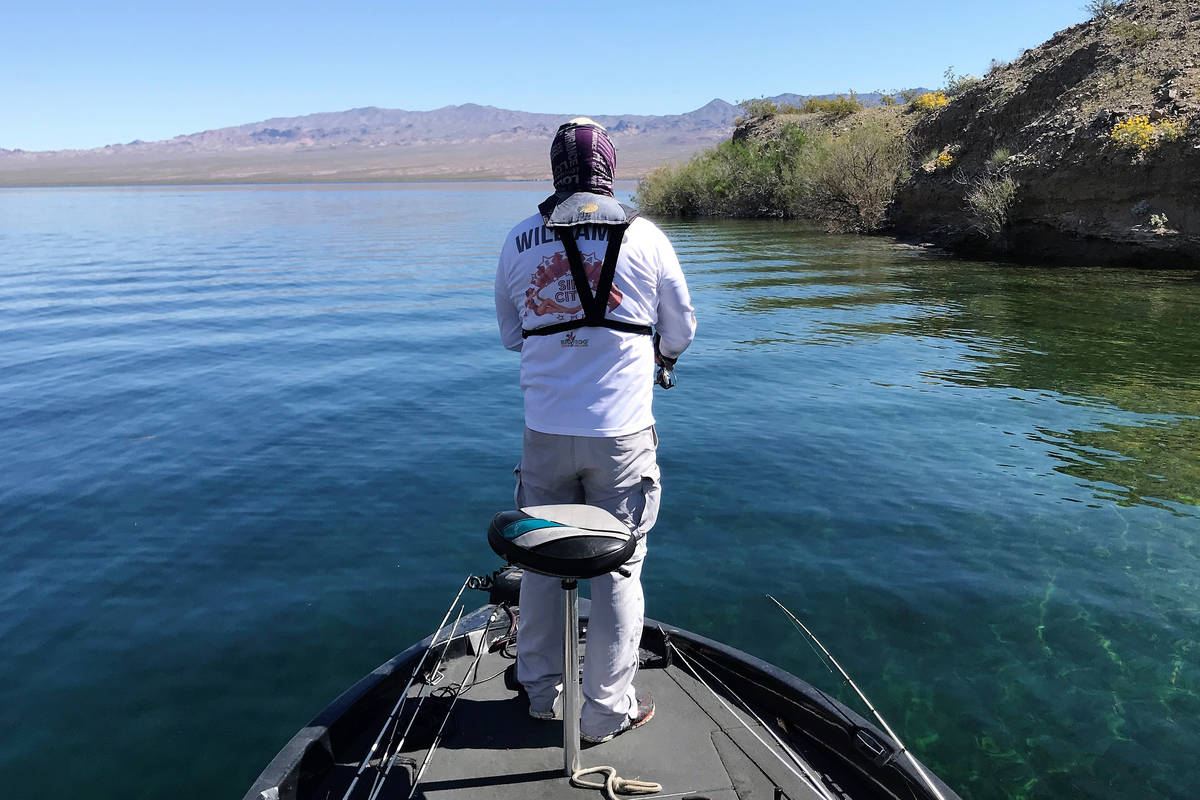How many fishing rods are too many? It depends on the angler

“How many fishing rods does it take to catch a fish? “
That question came from my smart aleck little brother when he saw the picture of my fully loaded kayak in a text alongside my complaint about staying at home. Though my response that I needed all six of those rods was equally smart at the time, his question did have at least some merit. But I cannot tell the kid that to his face.
Historically, I never had more than two fishing rods available at any one time. In fact, I never owned more than two. In Nevada and other Western states, you cannot legally fish with more than two rods at a time, so why have more than that?
Then this converted trout angler started hanging out with guys who fished for bass, and that experience changed my perspective. More than a little.
On my first outing on a bona fide bass boat, my mentor, Tim Myers, pulled out at least a half-dozen rods and laid them side by side on the deck in front of the cockpit. Each one had been pre-rigged with a different bait. Among them was a spinnerbait, a crankbait and a small selection of soft plastics arranged in various configurations.
I admired the collection, but in my mind asked the same question my brother asked me. “How many fishing rods does it take to catch a fish?” But it didn’t take long to get the answer.
As we pulled into a cove in the Overton Arm of Lake Mead, Myers picked up one of his rods and cast his bait along a rock face. Almost immediately a fish hit the bait but failed to take it. Myers instantly switched rods and threw a spinnerbait to the same spot. The fish hammered the spinnerbait and was the first of many Myers caught that day.
On that and subsequent outings with Myers and other bass fishing friends, I learned the value in having multiple rods ready at hand. Keep in mind that bass anglers tend to fish fast. They will fish a specific area quickly and sometimes change baits frequently. Rather than stopping to tie on a new bait or change rigs, they simply put down one rod and pick up another.
Early on I found myself spending valuable fishing time tying on new baits while my friends spent their time catching fish. The bottom line is that multiple rods means less time tying and more time fishing. It is about being a more efficient angler.
So, when your significant other asks why you are buying yet another fishing rod, you can explain that you are simply taking the necessary steps toward becoming more efficient.
As you might imagine, it wasn’t long before the number of rods I bring along on a bass fishing foray grew from two to six. Anything more than that is hard for me to handle, especially when I am fishing from a kayak.
Along the way, I also have learned that each angler has his personal preferences when it comes to baits. Those preferences determine how many rods they use and how they are rigged at the start of the day. Generally, my rods are rigged with a crankbait, a spinnerbait, a drop shot with a plastic worm or swimbait, a Ned rig or Texas rig, a jig and a topwater bait.
Do I use them all? Yes. Do I use all of them all of the time? No, I do not. I probably spend most of my time using the drop shot, the spinnerbait and the crankbait in that order. Why? Mostly out of personal preference. I like to use them. But I also have to be flexible and change things up when the fish get a little persnickety about their choice of baits.
The key to fishing success is being willing to learn new things and change things up. That is why I learned how to use a baitcasting reel. Has it improved my fishing? Yes, I would say it has. I can cast much more accurately with a baitcaster than I can with a spinning reel, yet I still use spinning reels. Each one has a place in an angler’s toolbox.
How many fishing rods do you need to catch a fish? As many as it takes.
Freelance writer Doug Nielsen is a conservation educator for the Nevada Department of Wildlife. His “In the Outdoors” column, published Thursday, is not affiliated with or endorsed by the NDOW. Any opinions he states in his column are his own. Find him on Facebook at @dougwritesoutdoors. He can be reached at intheoutdoorslv@gmail.com